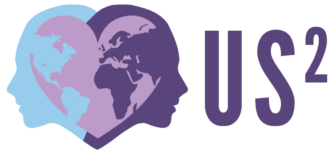As we pursue a transformed society, we must address the issues that hinder growth towards that goal. Ableism, like other forms of discrimination, has profound consequences. Ableism arises from stereotypes, biases, and systemic barriers, and is often unnoticed. Before recognizing ableism, you may have lacked awareness of people with disabilities, or maybe misunderstood what the barriers truly are. This blog will support by navigating key concepts tied to ableism, discovering underlying assumptions and stereotypes related to ableism, and exploring how ableism manifests in our culture.
The Nature of Ableism
First, let’s define ableism. At US², we define ableism as, “prejudice, stereotyping, or discrimination, based on actual or perceived dis/ability”. Ableism is not a single, isolated concept but a complex web of beliefs and behaviors that perpetuate discrimination against individuals with disabilities, both in a physical and intellectual nature. To comprehend its nature fully, we must dissect it into its essential components. In this section, we’ll explore three critical elements that define the nature of ableism: underlying assumptions and stereotypes, the role of implicit bias, and the concept of intersectionality. By dissecting these components, we aim to shed light on how ableism operates in our society and how we can address it effectively.
Assumptions and Stereotypes
Ableism often originates from deeply ingrained assumptions about what it means to have a disability. These assumptions lead to stereotypes that can be harmful and limiting. We explore more specifics about stereotypes later in this post.
Implicit Bias
Implicit bias plays a significant role in perpetuating ableism. Implicit biases are the underlying attitudes and beliefs we hold about people with disabilities, which can affect our interactions and decisions. Understanding implicit bias is crucial in dismantling ableism. While completely getting rid of your bias is not possible, exploring them without shame, blame, or guilt is a first step.
Intersectionality
The concept of intersectionality reminds us that individuals possess multiple identities that intersect and influence their experiences. In the context of ableism, understanding how race, gender, and other factors intersect with disability is vital. By considering intersectionality, we can gain a deeper understanding of the complexities of discrimination and work toward more inclusive solutions.
Underlying Assumptions and Stereotypes
As we continue, let’s honestly explore the ways to challenge underlying assumptions and stereotypes linked to ableism, understand why these aspects are so crucial, and discuss why it can be difficult. To combat ableism effectively, we must first challenge the deeply rooted assumptions and stereotypes that underpin it. These beliefs often shape how society views disability, influencing attitudes, policies, and behaviors, but they are often unacknowledged and unseen.
Here, we will address three key aspects: the shift from the medical model to the social model of disability, the importance of language and terminology, and the recognition that disability exists on a spectrum. By examining these elements, we can begin to dismantle the misconceptions and biases that perpetuate ableism.
Medical Model vs. Social Model
Traditionally, disability has been viewed through the lens of the medical model, which frames it as a problem residing solely within the individual. However, the social model shifts the perspective, highlighting that disability is not an individual’s deficiency, but a result of societal barriers. This shift has significant implications, as it encourages us to address the barriers to create a more inclusive society, rather than the people.
Language and Terminology
The words we use matter. When discussing disabilities, using respectful and inclusive language is paramount. This month’s email newsletter provides examples of person-first language, which emphasizes the person over their disability. While individuals may prefer different language to refer to themselves, using a person-first approach is a respectful place to begin the conversation. Understanding the impact of language on attitudes and perceptions is key to fostering a more inclusive and empathetic society.
The Spectrum of Ability
Disability is not a fixed state; it exists on a spectrum and abilities ebb and flow throughout the lifespan. While some disabilities may imply permanent impairment, recognizing this diversity within the disability community is essential. Dis/ability is not solely defined by limitations, rather it encompasses a wide range of abilities and experiences. By challenging the notion of disability as a binary concept, we embrace a more inclusive perspective.
Institutional and Cultural Manifestations
Recognizing the institutional and cultural manifestations of ableism is essential to understanding how it truly functions to create barriers. Understanding and addressing institutional and cultural manifestations of ableism are crucial for fostering a more inclusive and equitable society. These manifestations extend beyond individual attitudes, shaping the very structures and systems that influence the lives of individuals with disabilities.
In this section, we’ll explore three vital dimensions: accessibility barriers, representation and media, and workplace discrimination. By examining these manifestations, we can actively work towards dismantling the systemic barriers that sustain ableism in our society.
Accessibility Barriers
Accessibility barriers, whether physical or digital, often create hurdles that exclude people with disabilities from participating fully in society. Physical environments frequently present obstacles that exclude individuals with disabilities from essential spaces, information, and technology. Digitizing can seem like the solution to this, however, digital workspaces can also present barriers to those with physical and neurocognitive disabilities. Recognizing the importance of accessibility is the first step toward creating inclusive environments. Ensuring that all your media is accessible is vital to creating inclusive spaces – alternative image descriptions, captions, and variable speed settings are all quick adjustments to provide equitable experiences for all.
Representation and Media
Media and popular culture play a significant role in shaping societal perceptions but often perpetuate harmful stereotypes about people with disabilities. Unfortunately, they often reinforce negative stereotypes. Media and popular culture wield the power to shape how society views individuals with disabilities, therefore consuming media that shows a holistic view of life as a person with a disability is a great option to ensure we don’t reduce the experiences of people with disabilities to a few stereotyped images
Workplace Discrimination
Individuals with disabilities face unique challenges in the workplace, often encountering discrimination that limits their opportunities and career growth. It can manifest in various forms, from overt bias to subtle barriers. Workplace discrimination is a harsh reality for many individuals with disabilities and creates unnecessary barriers to living a full independent life.
As we conclude the initial exploration of ableism, we must reflect on how this understanding transforms our perspective. By grasping the nature of ableism, recognizing its underlying assumptions and stereotypes, and acknowledging its institutional and cultural manifestations, we are better equipped to drive change. However, this is simply the beginning. Knowing about ableism information; seeing it in ourselves starts to unlock the transformation. Continue your exploration of ableism in the blog, “Recognizing Ableism in Ourselves”, by turning the mirror inward and learning how to recognize ableism in yourself.




